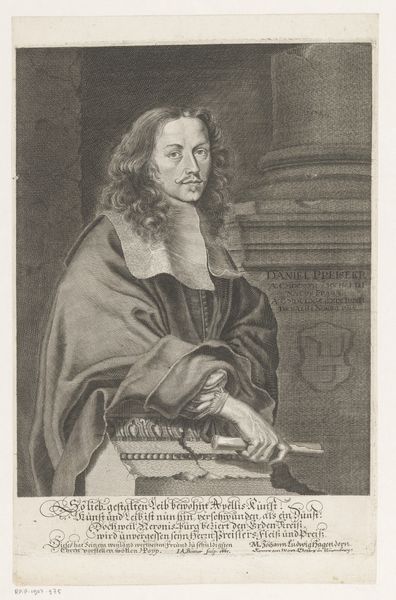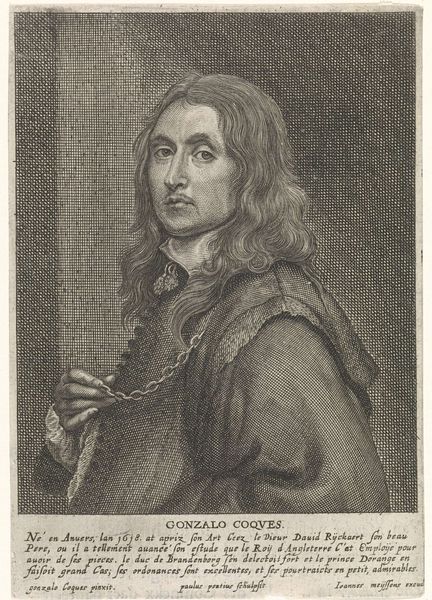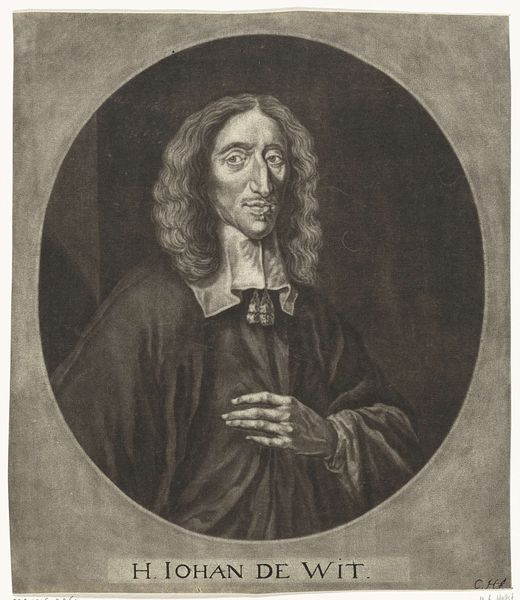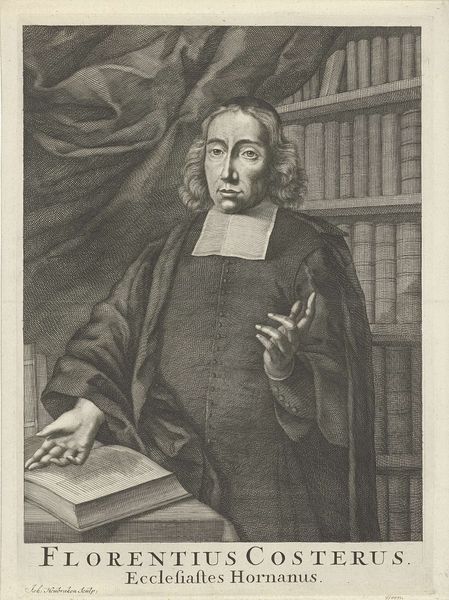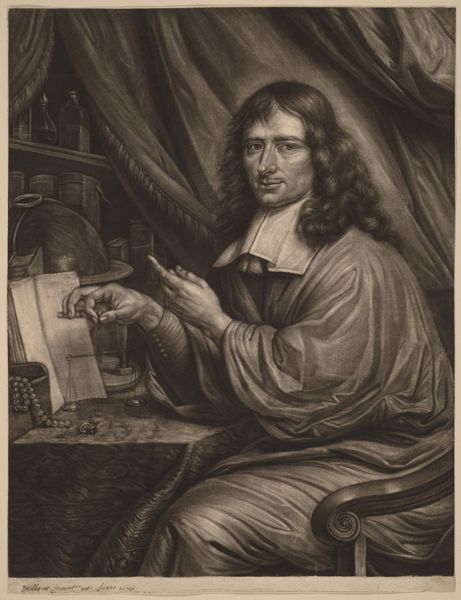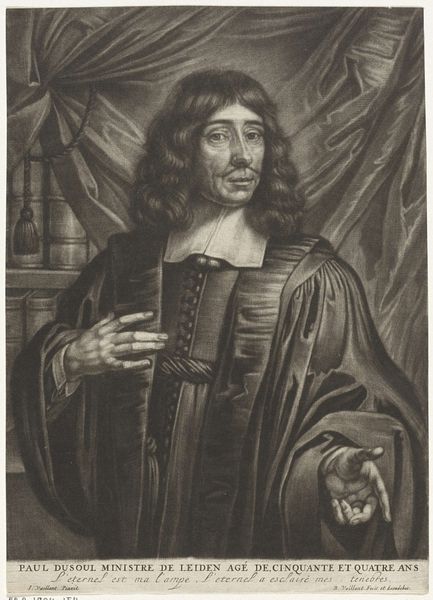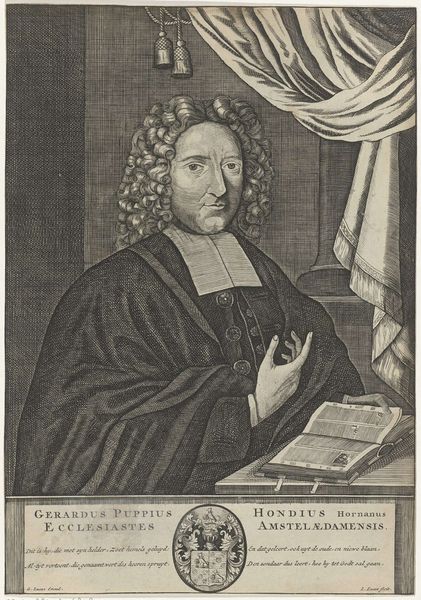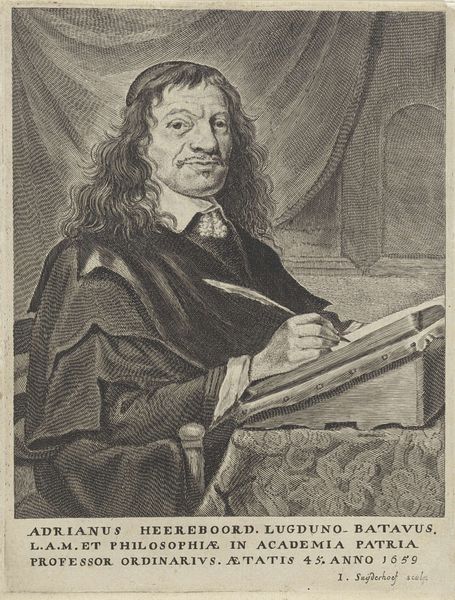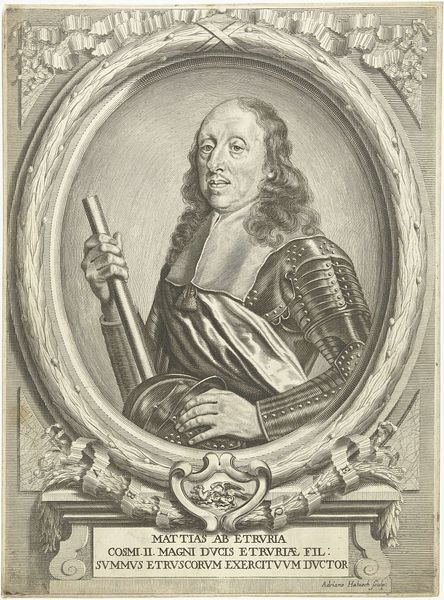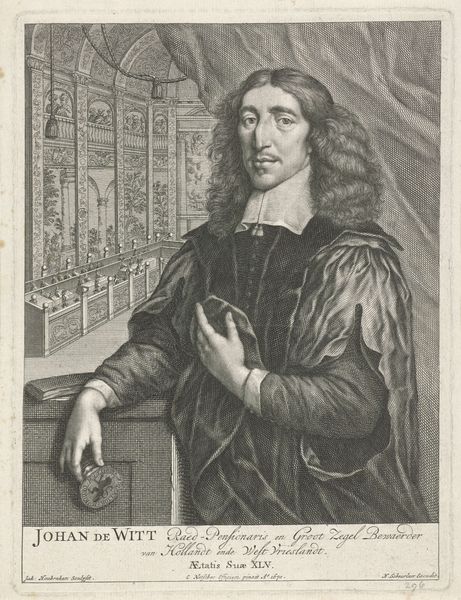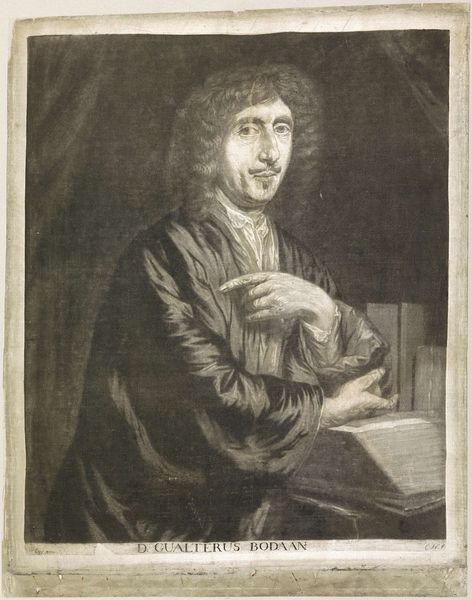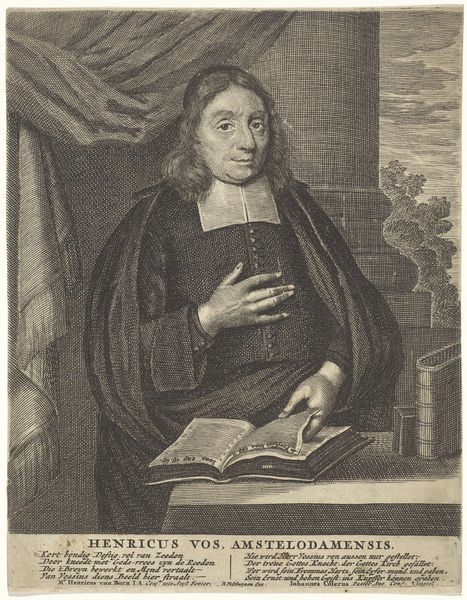
print, paper, ink, engraving
#
portrait
#
baroque
#
dutch-golden-age
# print
#
figuration
#
paper
#
ink
#
engraving
Dimensions: height 383 mm, width 277 mm
Copyright: Rijks Museum: Open Domain
Curator: Let's discuss this intriguing print titled "Portret van Hero Sibersma," created sometime between 1650 and 1700 by Cornelis A. Hellemans. The artwork employs the engraving technique with ink on paper, which was fairly common in the Dutch Golden Age. Editor: My first impression is one of quiet dignity. The sitter seems rather contemplative, almost melancholic, given the heavy lines of the engraving, particularly in the drapes and clothing, give it an austere moodiness. Curator: Precisely. Sibersma, was an important figure, a clergyman in Amsterdam, during a period of intense religious and social transformation. The Golden Age witnessed both unprecedented economic prosperity and stark religious divisions. It's essential to remember the historical tension within which this portrait was made. Editor: Indeed, this print circulated widely, not just as art, but also functioning as a representation, almost propaganda. It's impossible to disentangle it from the history of power structures. We see him here posed in this space that seems meant to convey authority, surrounded by his books and scholarly implements, sending very precise messages. Who gets remembered, how, and why becomes a really critical lens. Curator: The use of baroque stylistic elements is key; it suggests both a link to European aristocratic portraiture but also asserts status in a decidedly Dutch context where values of moderation and individual responsibility were prized. Note how Hellemans utilizes light and shadow to sculpt the face, imbuing it with a sense of gravity. The inscription reinforces this by associating Sibersma's legacy with piety. Editor: And even the inclusion of books can be read intersectionally. In the era where women faced substantial restrictions to education and knowledge production, images of male figures like this surrounded by texts and invoking notions of learning further cemented and perpetuated inequalities of opportunity. Art is never neutral. Curator: Very true. Through Hellemans’ print, Sibersma is situated and memorialized in a certain way; a representation which simultaneously reflects and shaped understandings of Dutch piety in the Golden Age. Editor: It underscores how portraits of this kind participated in creating hierarchies. Analyzing this work means critically asking whose stories are amplified, and which remain in the shadows, ensuring an equitable approach to how we consider artworks.
Comments
No comments
Be the first to comment and join the conversation on the ultimate creative platform.
